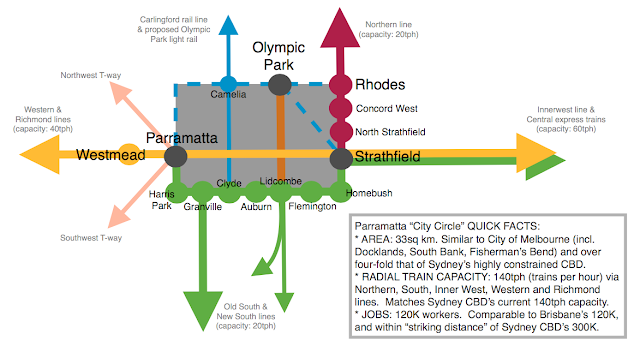Parramatta CBD is so much overshadowed by the Sydney CBD that it's characteristics as a CBD in it's own right are under-appreciated. I believe the biggest reason of the "under-marketing" of Parramatta CBD is that it is seen only through the lens of the high rise building zone around Parramatta railway station - whereas both Melbourne and Sydney CBD have the concepts of a "city circle" or "city loop" of 8+ train stations. Also, the boundaries of the Parramatta local government area are nonsensical, incorporating suburban areas far to the north of Parramatta River (bordering onto Hornsby LGA) whilst missing out on immediately adjacent employment zones like Silverwater and Olympic Park that are south of Parramatta River.
So it's important to redefine the conventional notion of Parramatta CBD. It needs to be more than a highrise zone around a single train station. It needs to incorporate diverse and vibrant precincts in the same way Sydney CBD has districts like Ultimo, Pyrmont, Darlinghurst that add character to the high rise business core.
The catch is therefore broadening out the definition of Parramatta CBD to the corridor contained within the "city circle" of train stations between Westmead, Strathfield and Rhodes:
This definition is important, as Parramatta station precinct on it's own is not in the "world class" league. However, Parramatta "city circle" is clearly world-class as highlighted in the poster below:




